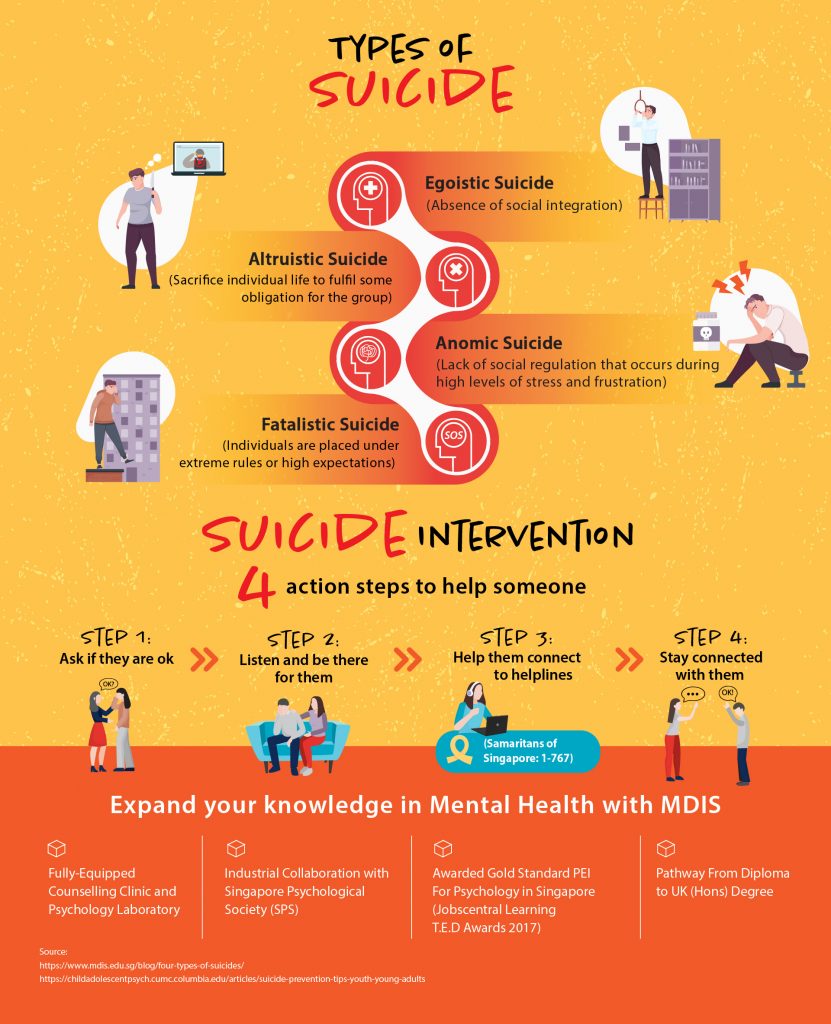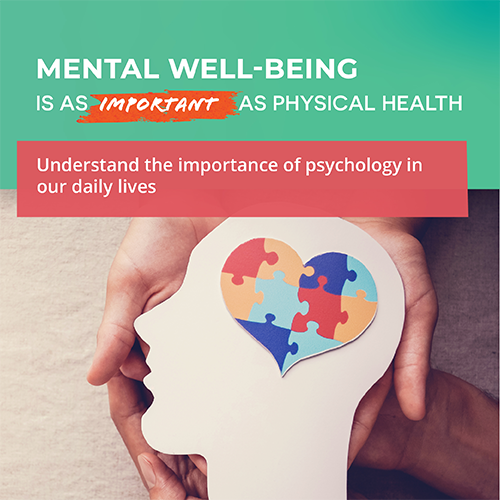Four Types of Suicides


In today’s society, the number of suicide cases is becoming increasingly common due to the increased stress individuals face. We, are taking the term “Suicide” too liberally without understanding that suicide itself has different reasoning and intent behind the action.
According to Emile Durkheim, the term suicide is applied to all cases of death resulting directly or indirectly from a positive or negative act of the victim, which he/she knows will produce this result (Pickering & Walford, 2011). Durkheim identifies four different types of suicide which are egoistic suicide, altruistic suicide, anomic suicide and fatalistic suicide.
Egoistic suicide is seen as stemming from the absence of social integration. It is committed by individuals who are social outcast and see themselves as being alone or an outsider. These individuals are unable to find their own place in society and have problems adjusting to groups. They received little and no social care. Suicide is seen as a solution for them to free themselves from loneliness or excessive individuation.
Altruistic suicide occurs when social group involvement is too high. Individuals are so well integrated into the group that they are willing to sacrifice their own life in order to fulfil some obligation for the group. Individuals kill themselves for the collective benefit of the group or for the cause that the group believes in. An example is someone who commits suicide for the sake of a religious or political cause, such as the infamous Japanese Kamikaze pilots of World War II, or the hijackers that crashed the airplanes into the World Trade Centre, the Pentagon, and a field in Pennsylvania in 2001. During World War II, Japanese Kamikaze pilots were willing to lay down their own lives for their countries in the hope that they will win the war. These pilots believed in their nation’s cause and were willing to sacrifice their lives. Similarly, suicide bombers around the world were willing to give up their lives in order to make a political or religious statement because they firmly believed in their group’s cause.
Anomic suicide is caused by the lack of social regulation and it occurs during high levels of stress and frustration. Anomic suicide stems from sudden and unexpected changes in situations. For example, when individuals suffer extreme financial loss, the disappointment and stress that individuals face may drive them towards committing suicide as a means of escape.
Studies conducted by the Centres for Disease Control and Prevention (CDC) have found that historically, suicides for people aged 25 to 64 rose during economic downturns (Sternheimer, 2011). There was a significant increase in suicide rates in USA from 1928 to 1932 when unemployment rates were nearly 24%. On the other hand, suicide rates were at a low in 2000 when unemployment was about 4%. In addition to economic downturns, disasters can also be associated with increases in suicide. The Japanese public health department reported that there was a rise in suicide rates after the 1995 Kobe earthquake. Earthquake survivors faced great stress and difficulty in trying to rebuild their livelihood and soon realised that their lives will not return back to normal due to the lost they suffered. Suicide became a means for them to escape reality.
Fatalistic suicide occurs when individuals are kept under tight regulation. These individuals are placed under extreme rules or high expectations are set upon them, which removes a person’s sense of self or individuality. Slavery and persecution are examples of fatalistic suicide where individuals may feel that they are destined by fate to be in such conditions and choose suicide as the only means of escaping such conditions. In South Korea, celebrities are being put under strict regulations. There was a case where, a singer committed suicide due to exhaustion to keep up with society’s rules and regulations. In 2017, celebrity Kim Jonghyun ended his life due to severe depression and the pressure of being in the spotlight as he felt that he could not fulfil the society’s expectations of his performance (Lee, 2018).
This article is contributed by Dr Amir Singh from the School of Psychology.

References
Lee, J. (2018, September 8). Family of late SHINee star Jonghyun sets up foundation support young artists. Retrieved from The Straits Times: https://www.straitstimes.com/lifestyle/entertainment/family-of-late-shinee-star-jonghyun-sets-up-foundation-to-support-young
W. S. F. Pickering; Geoffrey Walford; British Centre for Durkheimian Studies (2000). Durkheim’s Suicide: a century of research and debate. Psychology Press. p. 25. ISBN 978-0-415-20582-5. Retrieved 13 April 2011.











